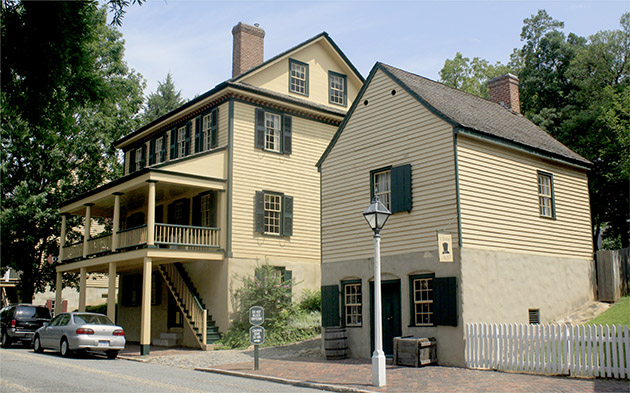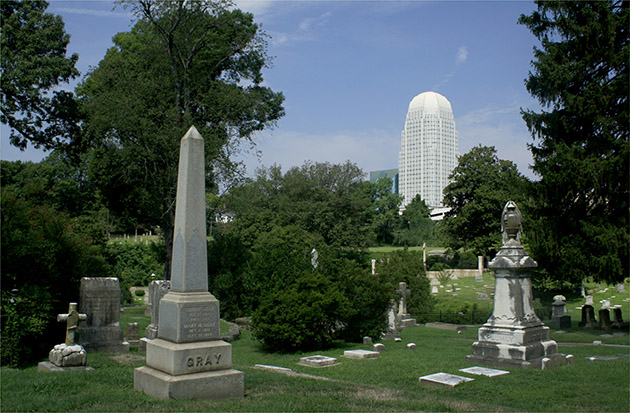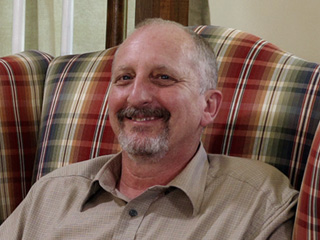The Human Touch Revealing All that is Real
Forsyth County (1849)
Publisher's note: We believe the subject of history makes people (i.e., American people) smarter, so in our quest to educate others, we will provide excerpts from the North Carolina History Project, an online publication of the John Locke Foundation. This twenty-third installment, by Jonathan Martin, is provided courtesy of the North Carolina History Project.
Known as the home of to R. J. Reynolds Tobacco, Wake Forest University, and the Moravian settlement of the Carolinas, Forsyth County was annexed from Stokes County in 1849 and was named for a War of 1812 colonel, Benjamin Forsyth. Winston-Salem is the county seat, other towns are Lewisville, Clemmons, Walkertown, Kernersville, Tobaccoville, Rural Hall, Belews Creek, Bethania, and Bethabara.

R.J. Reynolds was such a huge presence in Winston-Salem, as this vacant plant reflects near Hwy. 52 North: Above. In that same vicinity of this historic industrial area, the city stands the renovated S.J. Nissen building, where an wagon and repairs industry was once housed: Below. photos by Stan Deatherage Click the picture to expand to as much as 1000 pixels wide within most expanded images, and then push the arrows embedded in the center edge of the play-box to access the gallery, and slide new images into viewing within the center of the screen.

In 1753, Bishop August Spangenberg was awarded a 100,000-acre tract of land from the Lord Proprietor of North Carolina, Lord Granville. The land was named Wachovia because the Moravian patron Nicholas Ludwig von Zinzendorf's Austrian estate was known as "Wachau." Zinzendorf had provided a haven for Moravian outcasts in Germany, and he also sponsored the creation of the Wachovia colony.

The Moravian Communitiy, in Winston Salem and Forsyth County, has been very influential, even developing an all female college in 1742, Bethlehem Female Seminary, now Salem College: Above and Below. photos by Stan Deatherage Click the picture to expand to as much as 1000 pixels wide within most expanded images, and then push the arrows embedded in the center edge of the play-box to access the gallery, and slide new images into viewing within the center of the screen.

By 1766, Bethabara and Bethania had developed into Moravian communities. Salem, a commercial town tin which Moravian crafts and trades thrived, formed soon after in Wachovia. It would not be until 1913 when the town of Winston finally merged with Salem and became what it is known as today, Winston-Salem.

Wachovia was once the 3rd largest bank in the United States. Now it no longer exists, but the building still remains here as the backdrop to this large, mostly Moravian, "bone orchard" near Salem College: Above. At one time, here in Winston-Salem, a substantial banking community existed with Wachovia and another North Carolina bank, BB&T controlling the skyline: Below. photos by Stan Deatherage Click the picture to expand to as much as 1000 pixels wide within most expanded images, and then push the arrows embedded in the center edge of the play-box to access the gallery, and slide new images into viewing within the center of the screen.

Its pious origins combined with a Moravian work ethic and a growing immigrant population would make Winston-Salem into Forsyth County's cultural and economic capital. In 1875 Richard J. Reynolds instituted his tobacco corporation in Winston, and it propelled the area's economic growth for years to come. Other notable businesses founded in Forsyth County are Krispy Kreme Doughnuts as well as the Wachovia Corporation. In addition to these principal companies, agriculture and industry supports the remaining economy in the county. Tobacco, soybeans, corn, textiles, optical fiber, furniture, and tractors are all products of Forsyth County.
The Moravian heritage, academic institution, and R.J. Reynold's widespread philanthropy has made Winston-Salem and the surrounding area a haven for culture and art. The Reynolda House, the original house of the Reynold's family, displays numerous pieces of American art. The Arts Council of Winston-Salem and Forsyth County (1949), the nation's first local arts council, and the North Carolina School of Arts (1965), the state's first art conservatory, are both in the region. Also, Forsyth County is home to Salem College (1772), Winston-Salem State University (1897) and Wake Forest University (1834). Other festivals and events held in the area are the National Black Theatre Festival, the Dixie Classic Fair, and the Festival of Lights in Clemmons.
Sources:
"A Brief History of Forsyth County." 2009 - 2010 Budget of Forsyth County. http://www.co.forsyth.nc.us/budget/budget0910/history.pdf, (accessed on July 19, 2011). "Forsyth County." William S. Powell, ed. Encyclopedia of North Carolina (University of North Carolina Press: Chapel Hill, NC 2006), p. 457.
Go Back
Known as the home of to R. J. Reynolds Tobacco, Wake Forest University, and the Moravian settlement of the Carolinas, Forsyth County was annexed from Stokes County in 1849 and was named for a War of 1812 colonel, Benjamin Forsyth. Winston-Salem is the county seat, other towns are Lewisville, Clemmons, Walkertown, Kernersville, Tobaccoville, Rural Hall, Belews Creek, Bethania, and Bethabara.


In 1753, Bishop August Spangenberg was awarded a 100,000-acre tract of land from the Lord Proprietor of North Carolina, Lord Granville. The land was named Wachovia because the Moravian patron Nicholas Ludwig von Zinzendorf's Austrian estate was known as "Wachau." Zinzendorf had provided a haven for Moravian outcasts in Germany, and he also sponsored the creation of the Wachovia colony.


By 1766, Bethabara and Bethania had developed into Moravian communities. Salem, a commercial town tin which Moravian crafts and trades thrived, formed soon after in Wachovia. It would not be until 1913 when the town of Winston finally merged with Salem and became what it is known as today, Winston-Salem.


Its pious origins combined with a Moravian work ethic and a growing immigrant population would make Winston-Salem into Forsyth County's cultural and economic capital. In 1875 Richard J. Reynolds instituted his tobacco corporation in Winston, and it propelled the area's economic growth for years to come. Other notable businesses founded in Forsyth County are Krispy Kreme Doughnuts as well as the Wachovia Corporation. In addition to these principal companies, agriculture and industry supports the remaining economy in the county. Tobacco, soybeans, corn, textiles, optical fiber, furniture, and tractors are all products of Forsyth County.
The Moravian heritage, academic institution, and R.J. Reynold's widespread philanthropy has made Winston-Salem and the surrounding area a haven for culture and art. The Reynolda House, the original house of the Reynold's family, displays numerous pieces of American art. The Arts Council of Winston-Salem and Forsyth County (1949), the nation's first local arts council, and the North Carolina School of Arts (1965), the state's first art conservatory, are both in the region. Also, Forsyth County is home to Salem College (1772), Winston-Salem State University (1897) and Wake Forest University (1834). Other festivals and events held in the area are the National Black Theatre Festival, the Dixie Classic Fair, and the Festival of Lights in Clemmons.
Sources:
"A Brief History of Forsyth County." 2009 - 2010 Budget of Forsyth County. http://www.co.forsyth.nc.us/budget/budget0910/history.pdf, (accessed on July 19, 2011). "Forsyth County." William S. Powell, ed. Encyclopedia of North Carolina (University of North Carolina Press: Chapel Hill, NC 2006), p. 457.
| Exploration in North Carolina (Spanish) | NC Past, In the Past, Body & Soul | 3rd annual Darleen’s Flamingo 5K Exceeds Expectations! |





















